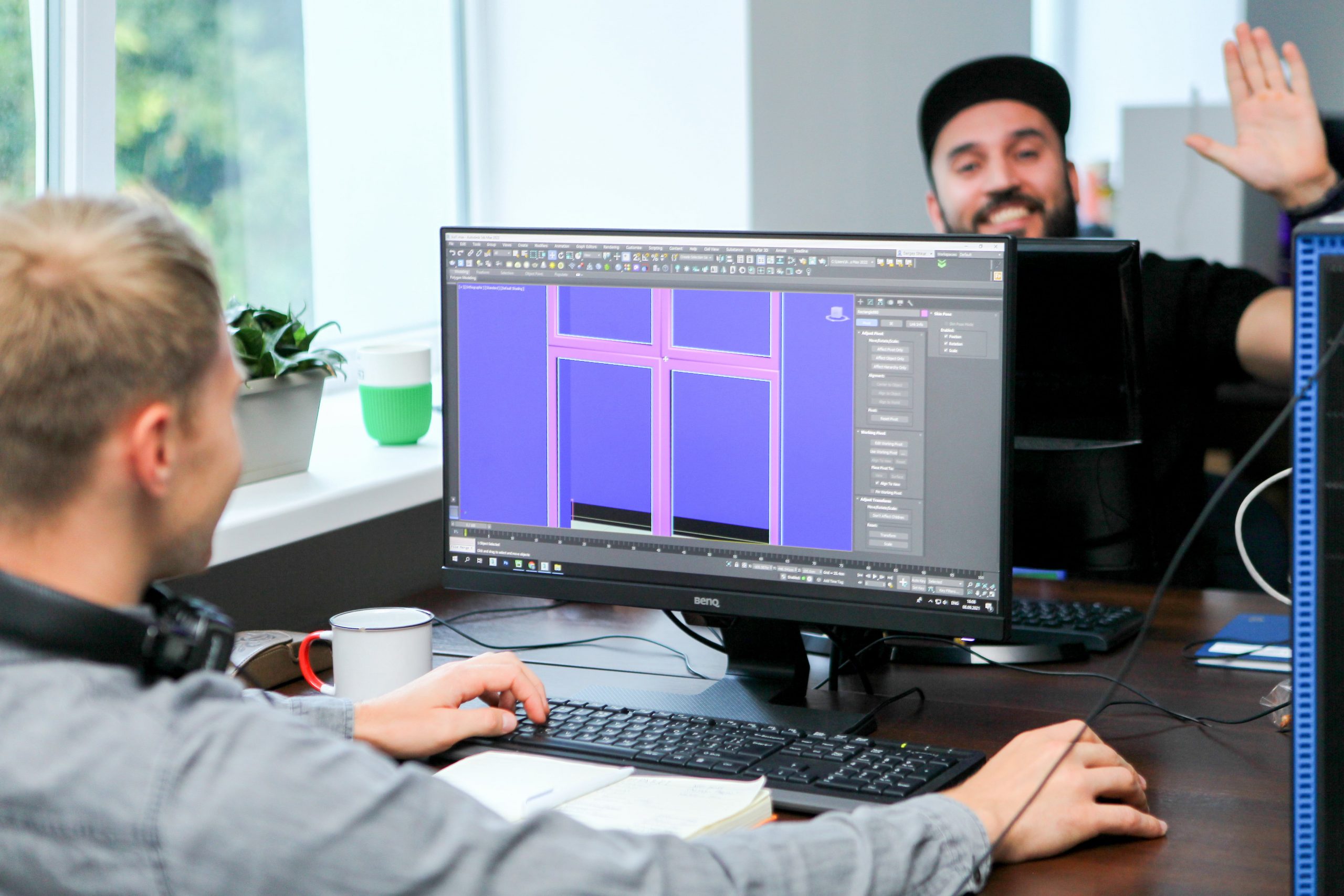How can an architect or a designer know they are getting the most out of working with a 3D rendering artist? After all, it’s crucial to understand what skills your partner has, what exactly their workflow is like, and what you can expect from such a collaboration.
To help you with that, our architectural rendering company prepared a list of 5 important facts about CGI specialists. So, read on to learn everything you need to know to ensure the most productive partnership with your 3D expert!
#1. 3D Rendering Artist is a Multitasking Specialist

The 3D artists work at the intersection of different creative professions, combining artistic features with the technical routine. Many of them have experience in photography, painting, and sculpture. Working with 3D unites all these types of art and converts these skills into digital form. For instance, 3D modeling is closely related to sculpting, as a realistic depiction of forms requires an understanding of proportions and dimensions. As for photography, it gives a 3D rendering artist the knowledge of using angles, lighting, and different types of shots. Video editing skills are useful for 3D animation. They allow professionals to create high-quality videos with captivating edits and dynamic transition effects.
As a result of this combination of knowledge, a 3D artist knows how to adjust angles to present a project in the most appealing way. In addition, they understand how to convey the ambiance and which type of lighting will lend itself better to the specifics of a project.
#2. 3D Expert is a Tech Geek

There are tons of professional programs for 3D work. The more qualified a specialist is, the larger their toolset is. The software for 3D rendering, modeling, sculpting, and animation multiplies each year. The 3D industry is based on new technologies, so it’s no wonder how geeky most 3D artists are. Especially those wanting to stay on top of trends and always be relevant.
For example, 3D artists at our company use 3ds Max, Revit, V-Ray, and Corona Renderer. Every program has its unique toolset, learning curve, compatibility with different plugins, and so on. The features of software influence a 3D artist’s workflow, speed, and the tools they can apply to create stunning architectural 3D renders and animation. So, thanks to their working experience, our experts know how to get the best results with different software while using its most beneficial options.
Take your design presentation to a new level with interior rendering
#3. CGI Specialist Never Stops Learning

There is no limit to perfection in such a creative industry. Architectural visualization specialists never stop learning and gaining new professional skills. Furthermore, the search for textures and new 3D models is something of a sport among 3D artists. Such vital assets as scripts, toolsets, and plugins are essential for a 3D rendering artist who wants to be the best among colleagues.
The 3D specialists at ArchiCGI constantly look for new advanced training courses to maintain and improve their expertise in the 3D field and create new professional connections. After all, learning and sharing experiences is the key to self-improvement and, therefore, a career boost.
#4. 3D Rendering Artist is a Team Player

A 3D artist rarely work alone, especially during large and complicated projects. That’s why CGI studios often have long-lasting contracts with big architectural and design companies. Joint work of 3D specialists means multitasking, namely, faster project execution and sticking to tight deadlines.
In our company, for instance, 450 professionals are organized into teams — we call them cells. Each cell has a mentor responsible for training CGI specialists and setting project standards. The value of this kind of company structure is that a 3D rendering artist working in a team knows exactly what they are responsible for. The idea that the whole team’s success depends on their results is a powerful motivator. At the same time, the specialists are free to find their own solutions and, if necessary, share them with others. This example of complementarity and mutual benefit strengthens the responsibility of 3D artist and improves their results.
#5. Each 3D Artist Has a Specialization

Efficient teamwork is also beneficial in terms of combining the different skills of 3D artists. Each one of them has the main specialization they are best at. Product 3D rendering requires knowledge of furniture design and advertising approach to the imagery. In the case of architectural CGI, the ability to create photorealistic backgrounds and large-scale scenes is crucial. What’s more, drawing skills and engineering knowledge are necessary for making layouts and floor plans. Therefore, when a project includes several types of 3D services, CGI specialists combine their experience and skills to provide stellar results for their clients.
A 3D rendering artist is a creative yet technically-minded expert. They combine 3D visualization knowledge with a thoroughly organized workflow to provide results beyond expectation. Besides, they never stop learning new professional tricks, keeping up with software updates, and building productive teamwork. As a matter of fact, ArchiCGI studio has 450 experienced 3D artists who are always eager to team up and make new visual masterpieces. Our experts have already created hundreds of high-quality 3D renderings that made a great impression on the clients.
Want to learn how much your project costs? See how we evaluate 3D rendering projects
Want to get incredible visual materials for the presentation of your projects and products? Contact our 3D rendering company to get splendid photorealistic CG visuals made by professional 3D artists.

Valerie Adams
Blog Writer
Valerie is an editor and content writer. She used to work on news and entertainment TV channels and in a fashion & design magazine. In her spare time, she enjoys visiting foreign countries, art events, film and street dancing festivals.



